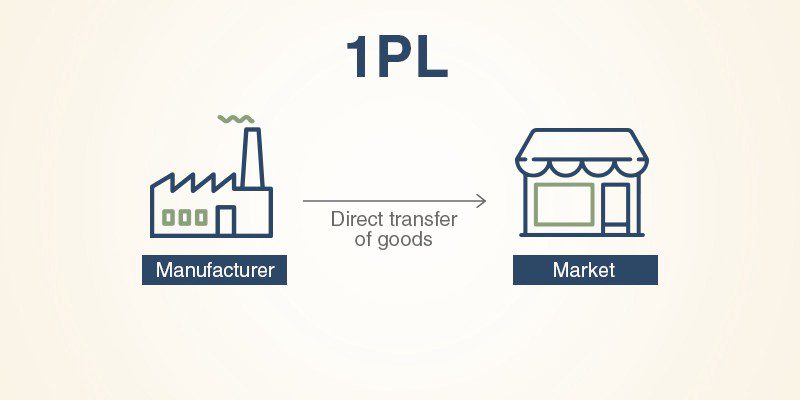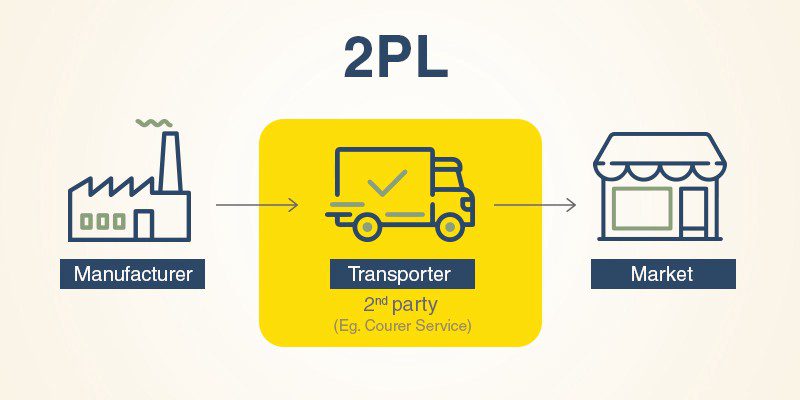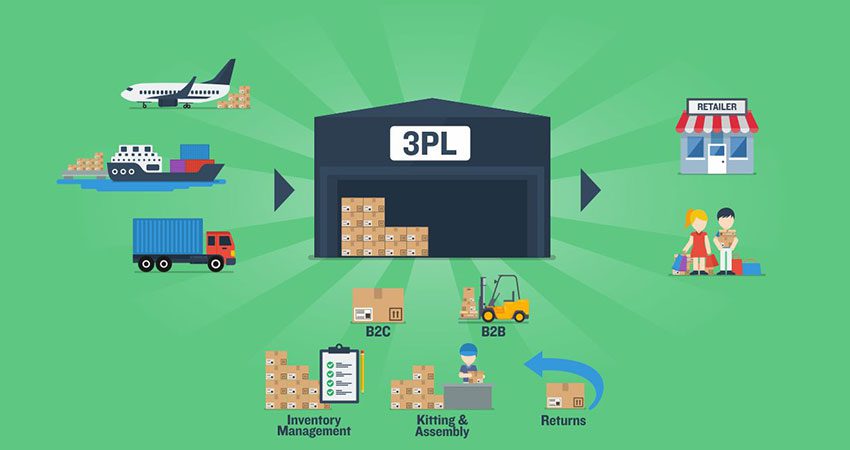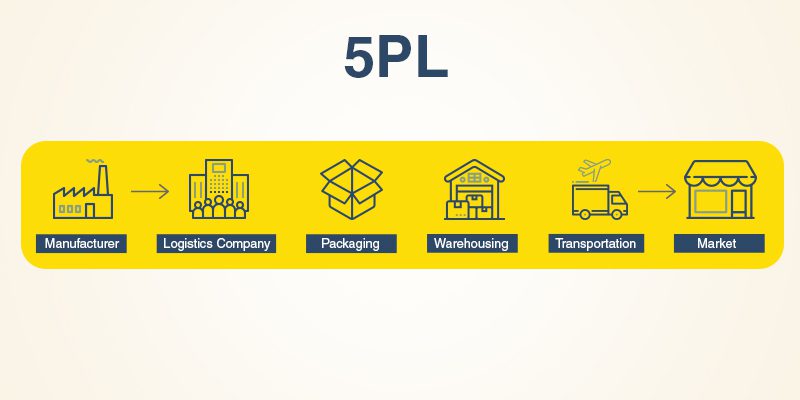Brief Overview of 1PL, 2PL, 3PL, 4PL, and 5PL
Table of Contents
Some businesses deal with logistics on their own, other use providers. More and more entities are now rendering such services, and their organization may vary.
Let’s understand what exactly does 1PL, 2PL, 3PL, 4PL & 5PL models suggest?
1PL - First-Party Logistics
The 1st party logistics to referred to a firm or individual, that has their own cargo, freight and can transport goods and merchandise from one point to another point. They are the specifically the consigner of different goods and products and organizes the transport of products to their respective destinations. It mainly consists of two parties that get benefit from the transaction. The manufacturer or the supplier and the person buying it. There are no other middlemen involved in the whole process.
First Party Logistic Model (1PL). The manufacturer or the industrial actor does not outsource transport and logistic activities to third parties. These functions are carried out by the company’s own departments.

2PL - Second-Party Logistics
Second Party Logistic Model (2PL). The manufacturer hires a carrier or warehouse manager as a subcontractor for the operational execution of a clearly defined transport or logistic task. The organisation and follow-up remain the responsibility of the manufacturer. The relation supplier is often only cost-driven and short-term, with the logistic actor doing what the client instructs, and being paid accordingly.
An organization or enterprise that maintains assets like vehicles or airplanes to transport products from one place to another is a 2PL. The same local farm might hire a 2PL to transport their vegetables, cereals, or eggs from the farm to the supermarket.

3PL - Third-Party Logistics
Within a 3PL model, an enterprise asserts management supervision but outsources operations of transport and logistics into a supplier who might subcontract out some or all of the implementation.
Third Party Logistics (3PL Service) is a powerful service handle that frees the Business Company, and enables it to focus on other aspects of the business, by managing the outsourcing of operational logistics, from warehousing to delivery, for the Business Company.
A number of services pertaining to the logistics of supply chain are provided by 3PL Providers. These services include transportation, warehousing, picking and packing, inventory forecasting, order fulfilment, packaging and freight forwarding.
Considering all of the above, there is no doubt that a 3PL (Third-Party Logistics) provider is important for the smooth functioning of a business.
The biggest advantage offered by a 3PL provider is that it completely manages these operational logistics, thereby taking a load off your hands. This enables the Brand to focus on other aspects of the business, like sales, marketing, product development etc., with freedom. Hence, outsourcing operational logistics to 3PL provider empowers the business with precious time and resource that can be engaged in other crucial parts of business growth.

4PL - Fourth-Party Logistics
In the 4PL model, a venture outsources the management of logistics activities as well as the implementation throughout the supply chain.
Fourth Party Logistics Model ( 4PL ): The maker doesn’t just re-appropriate the association of its calculated undertakings to outsiders, yet in addition the administration thereof. Fourth-Party logistic providers frequently check the whole flexibly chain. The authoritative and official exercises are again frequently redistributed to different parties.
4pl service provider often have no means of transport and warehouses (non-asset based logistics). The fourth party logistic role demands intense involvement from the service supplier in the client’s business activities. After all, not only does the latter outsource the execution but also the monitoring of the logistic processes. The short-term thinking with collaboration agreements purely on the basis of cost-related reasons is replaced with long-term partnerships where quality of the service will play a primary role, and which involves shared risks and benefits.
A 4pl service provider is a supply chain integrator. The 4PL assembles and manages all resources, capabilities and technology of an organisation’s Supply Chain and its array of providers.
An experienced and reliable 4pl service provider will bring value and a reengineered approach to your organisation as it will manage the logistics process, regardless of what carriers, forwarders or warehouses are used. As the centralised contact with the client, 4PL has overall responsibility for logistics performance and the ability to impact the entire supply chain and not just single elements. Consider how many discrete discussions you need to have in your company to ensure your product gets into consumers hands!

You May Also Like To Read: 3PL VS 4PL
5PL - Fifth-Party Logistics
The 5th logistics service supplier can fortify demand. Additionally, it negotiates rates with other service providers, like trucks, airlines, etc.
- A 5PL operator is a logistics service provider that plans organizes and implements logistics solutions on behalf of other commercial entities.
- The 5th logistics service supplier can fortify demand. Additionally, it negotiates rates with other service providers, like trucks, airlines, etc.
- The businesses which outsource their logistics’ management functionalities to third parties make a great illustration of such a remedy.
- The 5PL theory recently gained hype with the popularization of e-commerce.
- Along with the integration and management of a supply chain, the 5PL organizations provide some other beneficial services, such as call facilities or online payments.

BLOG: Brief Overview of 1PL, 2PL, 3PL, 4PL, and 5PL
Powered By 360Presence
Leave a Replay
1PL 2PL 3PL 4PL 5PL 1PL 2PL 3PL 4PL 5PL 1PL 2PL 3PL 4PL 5PL 1PL 2PL 3PL 4PL 5PL




